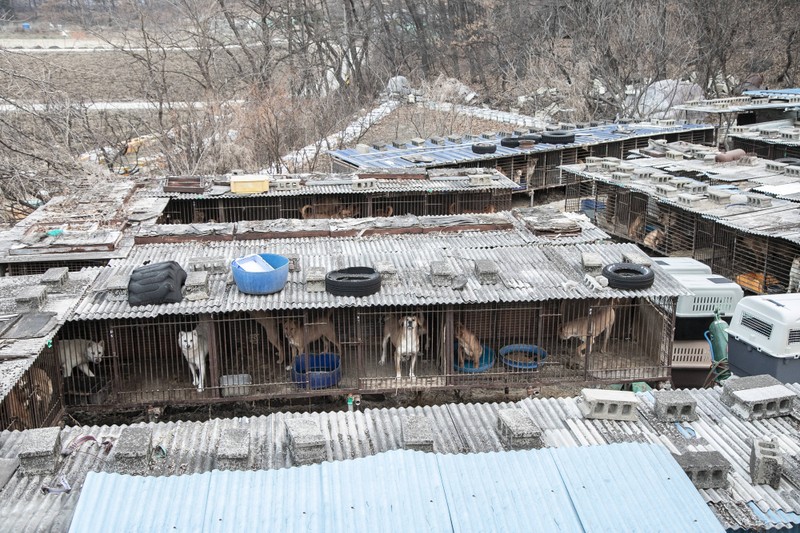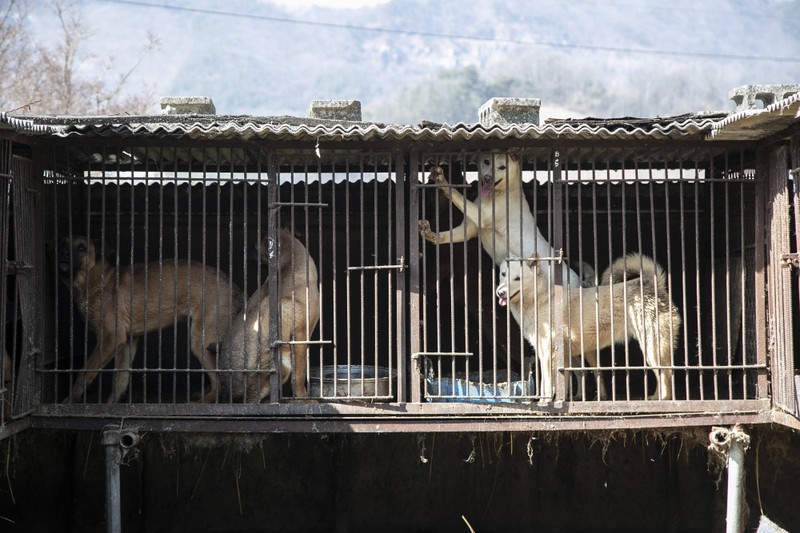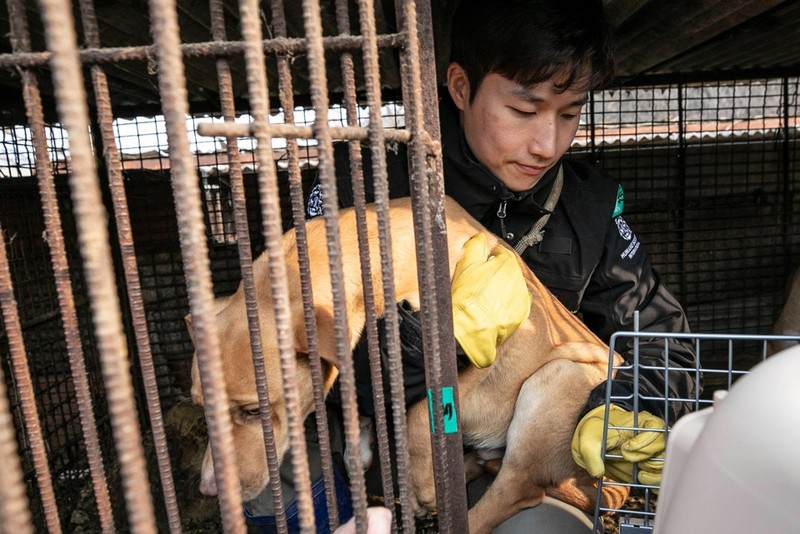
One of the 200 dogs rescued from Mr. Yang’s farm.
Samsun has never known freedom. The 3-year-old dog was kept in a steel mesh cage all her life, living in cramped quarters and eating leftover scraps. She existed solely to breed puppies who would later be slaughtered for meat.
Normally, Samsun would have been slaughtered for meat. However, in early March, she was among nearly 200 dogs rescued from a farm in Asan City, South Korea, according to a report by VICE.
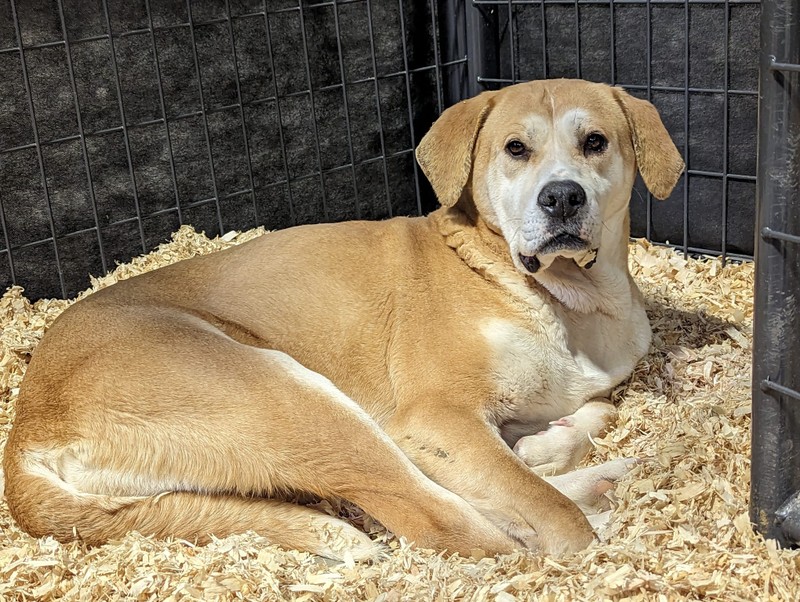
On March 7th, when the animal welfare group Humane Society International (HSI) arrived at the nearly 30-year-old slaughterhouse where Samsun lived, the dogs there barked continuously as if they were calling for help. The strong smell of feces filled the cold winter air.
Activists opened each rusted cage, comforting the trembling dogs before placing them in new crates. They then loaded the dogs onto trucks and transported them to the airport, where they would fly to the United States to await adoption.
“I’m very happy today. I’ve never even been on a plane, let alone traveled to the United States. But my dogs are going to the land of the stars and stripes to live in a better environment,” Yang Jong-tae, the owner of the dog farm, told VICE while observing the rescue operation.
About 30 years ago, Yang quit his job as a truck driver and moved to the countryside to raise animals for a living. Initially, he only had a few dogs, but over time, he had many puppies.
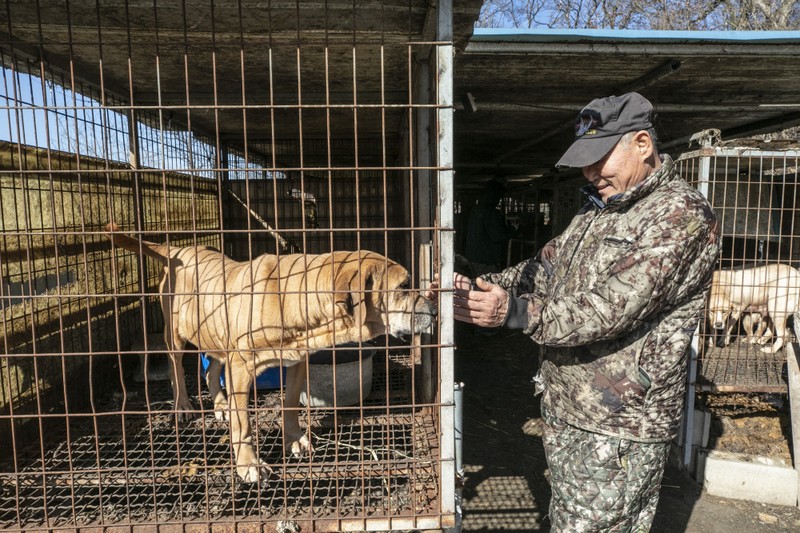
Mr. Yang, the owner of the farming and slaughterhouse, bid farewell to the dogs before they departed.
Yang never intended to build a dog slaughterhouse, but the business helped him make money. However, last year he decided to close the farm, contacted HSI, and switched to farming.
“It was difficult to continue the work at my age. Meanwhile, people kept campaigning to stop eating dog meat, even filing civil lawsuits. So, I thought it was time to close this farm. Moreover, I know that the dogs will go to a new loving home, so I’m very happy to let them go,” Yang (73 years old) shared.
Eating dog meat used to be popular in South Korea. Some older generations believed that the meat of this animal could enhance their health. However, this is changing now.
In a 2020 survey by Nielsen, 84% of South Koreans said they had never eaten dog meat and would not eat dog meat in the future. The percentage of South Koreans supporting a ban on dog meat also increased from 34.7% in 2017 to 58.6% in 2020.
The 18th slaughterhouse out of thousands was covered in dog feces that stained the work clothes of Lee Sang-kyung, who directed the HSI rescue campaign, as he moved the animals out of their cages.
“I don’t mind getting dirty. But I’m really heartbroken to see these dogs in extreme stress when they don’t understand what’s going on,” he told VICE.
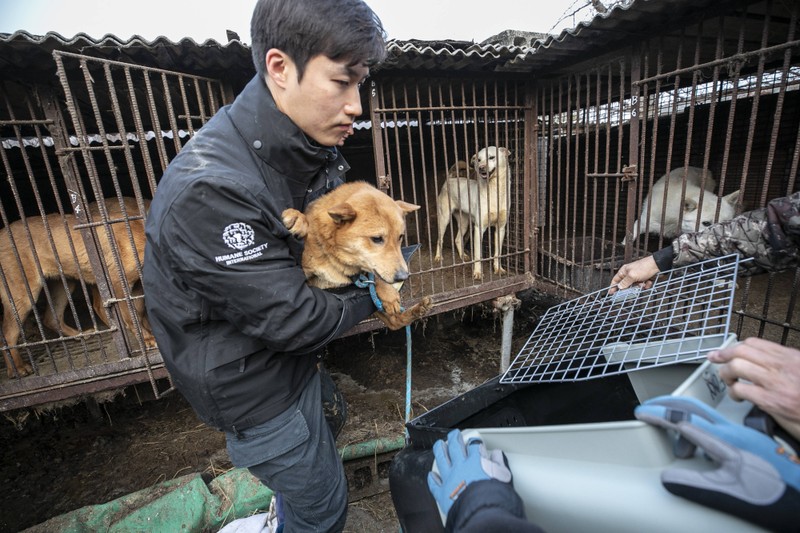
At thousands of farms across South Korea, around one million dogs are bred and confined in terrible conditions to await slaughter for their meat. Mr. Yang’s farm was the 18th slaughterhouse closed by HSI. The organization said they have rescued more than 2,700 dogs in South Korea.
“There are puppies born in these cages, but unfortunately, they die and get stuck in the wire. Some owners ignore them, leaving mother dogs to eat the corpses of their puppies. It’s a heartbreaking sight,” Lee said.
However, Lee still has hope for the future. Of the 200 dogs rescued from Yang’s farm, 160 have been transported to the United States, according to HSI. They will receive medical care, go to rehabilitation centers, and then live in rescue stations awaiting adoption.
The remaining dogs will be cared for in South Korea, as they are still too young to travel long distances. Lee said Samsun and the puppies are now safe in the United States.
“I feel fulfilled when dog meat farmers decide to abandon this job and cooperate with us. At the same time, I feel proud that we finally rescued these animals and put them on the plane. I can imagine a bright future for these dogs, where they can run and play freely,” he said.
